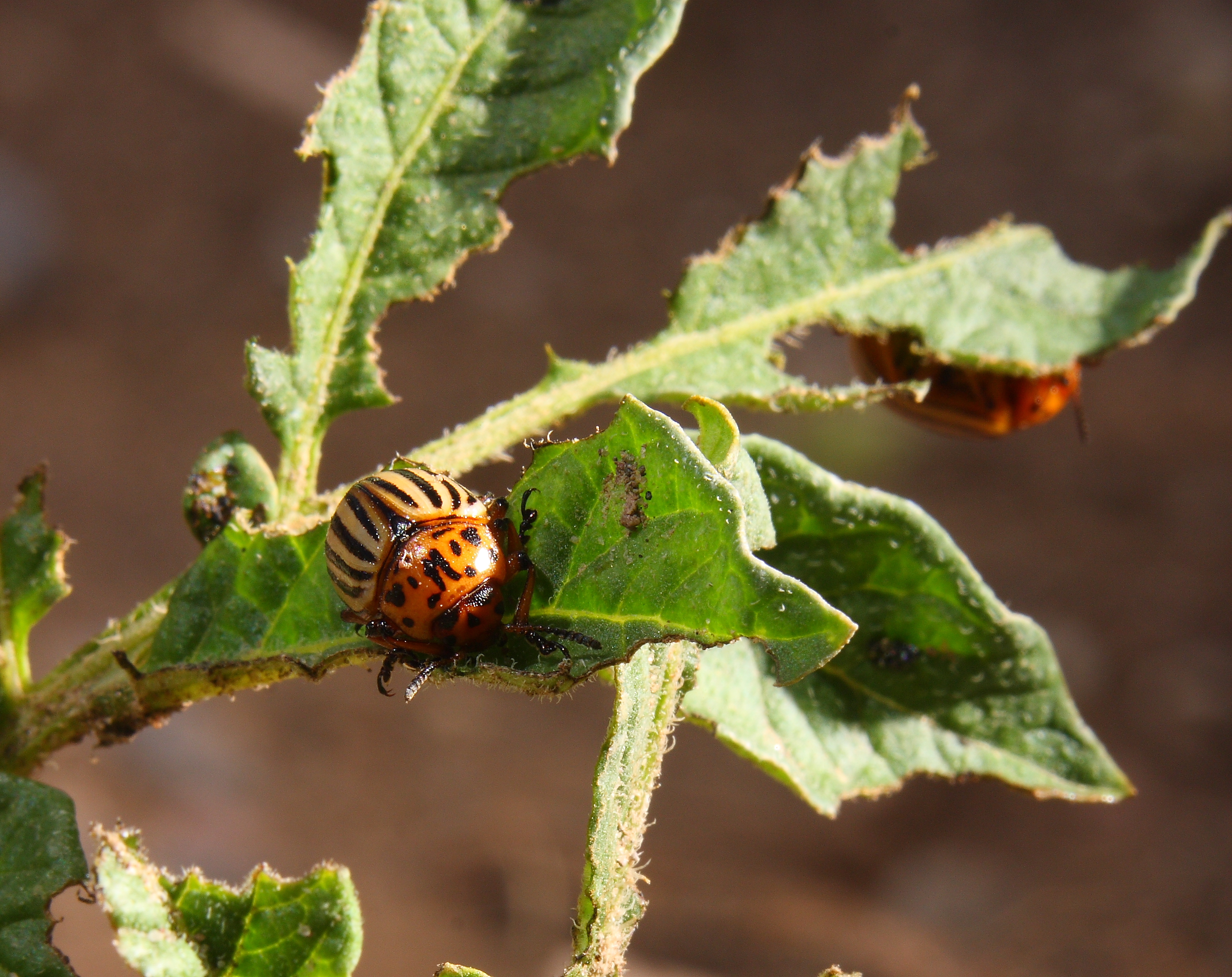This article appears in the May 2018 issue of Potato Grower.
Colorado potato beetle is major pest of cultivated potato, in many instances causing 30 to 50 percent losses in tuber yield. Both the larval and adult stages of the beetle feed on potato leaves, and an infestation can lead to defoliation of the crop in a matter of days. Control of the beetle has involved use of neonicotinoid insecticides, particularly imidacloprid. However, there is concern that beetle populations are developing resistance and that neonicotinoids may have unintended effects on beneficial insects, which has made finding alternatives to insecticides a priority.
While Colorado potato beetles feed voraciously on the leaves of the potato plant, the beetles will avoid feeding on some wild relatives of potato in the Solanum genus. Yvan Pelletier, a retired entomologist at Agriculture and Agri-Food Canada (AAFC), and his team spent many years screening wild Solanum plants in fields naturally infested with Colorado potato beetle to identify resistant species. AAFC geneticist David De Koeyer and retired breeder Hielke De Jong cross-pollinated wild Solanum plants with domesticated potato to produce hybrid crosses with increased Colorado potato beetle resistance. Benoit Bizimungu and Agnes Murphy, potato breeders at AAFC, evaluated resistant progenies in multiple generations in fields and laboratories, testing to identify adapted lines with improved agronomic and processing traits. Resistant selections are progressing through various stages of the potato breeding program; the first generation was released in the AAFC accelerated release program in 2016.
In potato, cross-pollinations mix half the genetic material from one parent with half the genetic material from the other parent to form the embryo in true botanical seed. The problem is, each parent does not always contribute the same half of its genetic material. It is like shuffling cards: A different half is contributed in each pollen grain and egg cell. This means that each of the seeds has a different shuffle of genetic material contributed from each of the parents. The plants that grow from these true seeds have a unique genetic combination of the parents. In the AAFC breeding greenhouse in Fredericton, New Brunswick, 100,000 seeds are planted annually from hundreds of crosses of pairs of parents. It is the job of the breeder and the breeding team to find the gems among these plants that have the right combination of genes to produce potatoes with high-quality tubers along with other traits, including resistance to Colorado potato beetle. Screening for beetle resistance is a laborious task involving quantification of insect feeding, and only small numbers of plants can be screened at any one time. The task of selection would be a lot more efficient if the breeder could use genetic information from DNA markers for assistance.

Helen Tai is a genomics researcher at AAFC who works on development of more efficient selection tools for potato breeding. Because screening for beetles on whole plants is so laborious, Tai turned to analyzing naturally produced compounds in the leaves to identify a chemical signature in the leaf that could be used to characterize resistance. One important chemical difference was in glycoalkaloids, complex chemical defense compounds synthesized from cholesterol and sugars by the plant’s own biosynthetic machinery. In particular, the domesticated potato produces the glycoalkaloids solanine and chaconine. Because solanine and chaconine are toxic to humans, potatoes are bred to have low levels of these compounds in tubers. However, levels of these glycoalkaloids remain high in potato plant leaves.
Although Colorado potato beetles have a steady diet of leaves, they are not affected by the toxicity of solanine and chaconine. Jamuna Paudel, a post-doctoral fellow in Tai’s lab, researched the effects of artificially reducing solanine and chaconine in domesticated potato and found that feeding rates remained the same, but insects raised on these plants developed more quickly and died earlier. The researchers concluded that Colorado potato beetles had adapted to feeding on a diet of high solanine and chaconine, and that reducing these glycoalkaloids in the diet disturbed the pests’ normal development. Tai also found that all wild, Colorado potato beetle-resistant Solanum species had low levels of solanine and chaconine. Further investigation of the wild Solanum revealed that instead of solanine and chaconine, another glycoalkaloid, dehydrocommersonine, was produced.
Tai’s lab also discovered that the leaves of the domesticated potato not only had higher levels of solanine and chaconine compared to tubers, but they also produced a third glycoalkaloid, solanidenol chacotriose. Further studies showed that leaves of resistant hybrids had high dehydrocommersonine and low solanidenol chacotriose, while susceptible hybrids had the opposite pattern. Armed with this new way of defining Colorado potato beetle resistance, Tai teamed up with Kyle Gardner and used genetic mapping to find DNA markers linked to the region of the potato genome contributing to the resistance trait. These resistance markers can be combined with additional markers linked to other important traits, such as resistance to viruses, for use in selection of superior potato varieties.
With recently hired entomologist Chandra Moffat, Tai, Bizimungu and Gardner are investigating how Colorado potato beetles will respond over time to the most promising hybrid crosses produced by the breeding program.
As the Colorado potato beetle is a dynamic and notoriously adaptable insect, researchers will need to keep investigating new ways to stay ahead of it by developing more genetic sources of resistance and strategies for integrated pest management.